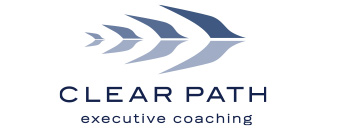
Question: What do coaching and doing a handstand have in common?
Answer: They both allow you to see things from a different perspective.
Often, clients come to coaching because they feel blocked or stalled around a personal or professional developmental goal. And although I don’t ask my clients to literally stand on their hands, I do ask them to turn their world upside down figuratively by encouraging them to explore other ways of looking at their situation. Whether you work with a coach or not, the use of a “reframe” or perspective change is a powerful tool for overcoming inertia and getting into action.
A perspective is a point of view or a particular attitude or way of looking at something. Although on some level we all know that there is never just one view of a situation, we often get attached to our perspective, convincing ourselves that it is the true and accurate view of reality. We tell ourselves “that’s just how it is”.
But that kind of thinking is not only inaccurate, it puts you in a box, limits your options and can prevent you from making the change you desire. Some examples of limiting perspectives I hear from clients are:
- I’m just not good at networking
- Public speaking is terrifying
- I don’t have time to work out
- Asking for a raise is scary
And although there very well may be some truth in those perspectives, there is also some truth in many other alternative perspectives. The goal of reframing is to expand your vision so you can consider a wide range of possibilities, yielding a broader, more creative exploration of the issue before you.
Here’s how to do it…
First, identify and name your current perspective. For example, if you’re dealing with a professional set-back, you might be in the “I’ll never bounce back” perspective. It’s important to spend some time with your current viewpoint to explore whether it is serving you well. To do so, consider the following questions:
- How does this perspective make you feel?
- What does it get you?
- What’s possible from this perspective?
- What’s the payoff?
- What’s the cost?
It is much harder to get into action from a perspective that drains you, so If the answer to these questions is consistently negative, ask yourself if you are willing to explore another way of being around the issue. Then look for alternative perspectives that are also true and ask yourself the same questions.
It’s helpful to make the process creative and fun. For example, you can choose to look at the situation from the perspective of a famous person you admire. So, in your struggle to recover from your perceived failure, try the “Thomas Edison” perspective. Edison is known for his persistence in the face of many unsuccessful attempts at creating the first commercially practical incandescent light. His famous quote, “I haven’t failed. I’ve just found 10,000 ways that won’t work” reveals an orientation toward mistakes that encouraged his resilience and ultimate success. Ask yourself the questions above from this place.
Or, you could choose to look at things from the perspective of one of your values. For example, if you’re someone who loves adventure, you could look at how to bounce back from the “adventurous” perspective – i.e. the perspective of someone who is fearless or ready to accept hard challenges—and see what’s possible from that vantage point.
The key is to consider a number of different perspectives so you don’t fall into the “either/or” trap. And you don’t have to limit yourself to only “positive” perspectives. You can explore the perspective of your naysayer or inner-critic to see whether they offer any insights about your habitual way of thinking.
Try it out…
You can use this technique to assess whether your perspective on leadership is serving you well. For example, if I’m of the view that leaders need to have all the answers, I might be reluctant to ask for help or fear being viewed as weak if I admit to not knowing something. This perspective could lead to a less robust decision-making process and demoralize my team as it excludes input from others and creates undue pressure and stress as I expend time and energy proving I’m right.
However, if I switch my perspective to leaders need to ask the right questions, I am more apt to stay curious, creative and open-minded. In addition, I’m more likely to build a culture of collaboration and inclusion, recognizing the value of my team members’ contributions.
A simple reframe you can try in all areas of your life is the shift from “I have to” to “I get to.” Think of something on your to-do list. Notice the difference in your energy when you approach it from the “I get to” perspective versus the “I have to.” I use this approach when it’s time for me to write an article. As long as I am stuck in “I have to” (otherwise known as the heavy-sigh perspective), I feel demotivated and will do anything to avoid sitting down to write. However, when I approach the task from the “I get to” perspective, I feel energized and empowered to complete the task and even find some pleasure in the process.
The bottom line is the way we look at things makes a difference. So, the next time you feel stuck, challenge yourself to do a mental handstand. Choosing your perspective is very empowering and can mean the difference between action and inertia.









